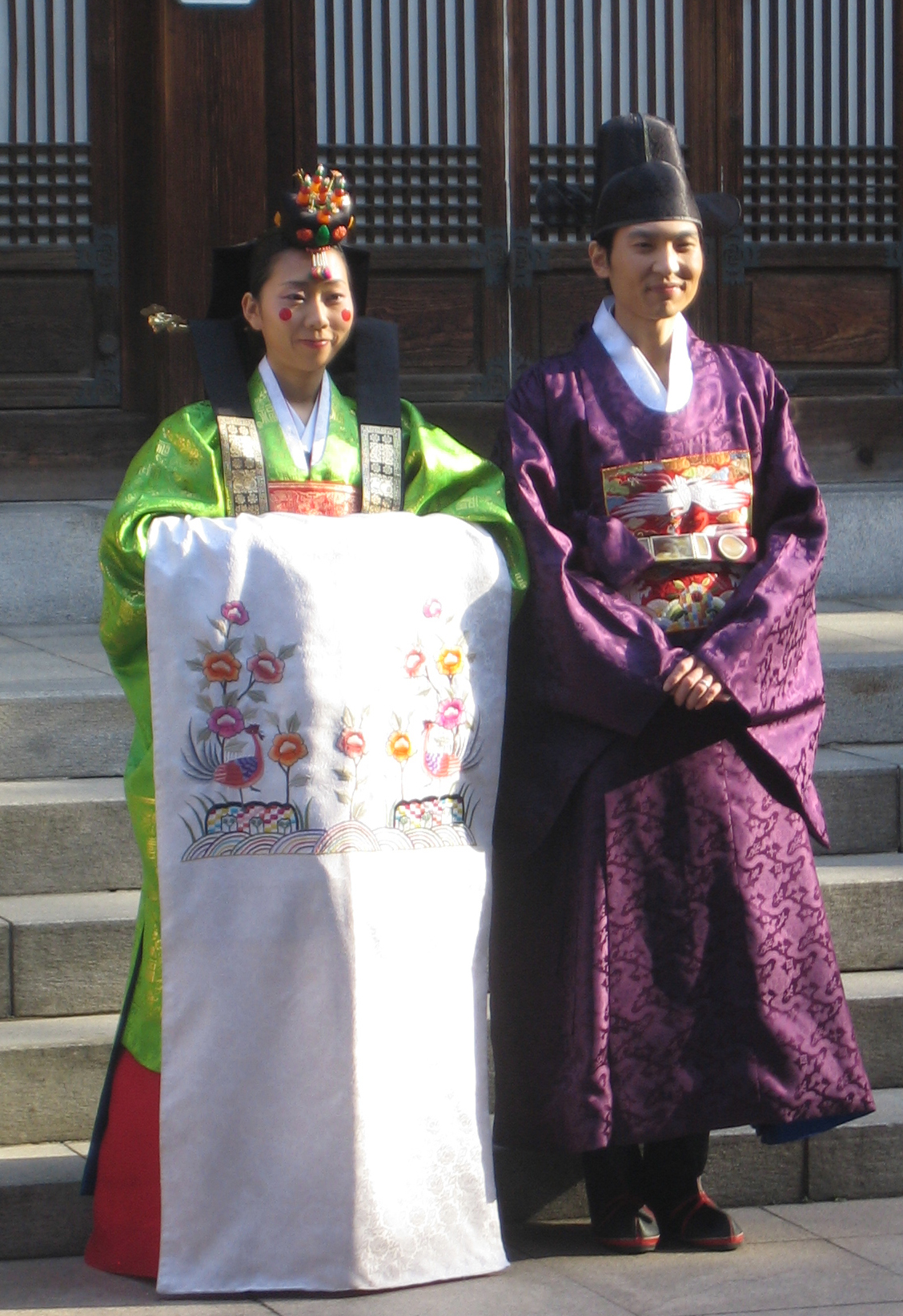Jokduri on:
[Wikipedia]
[Google]
[Amazon]
A is a type of traditional

 It is said that the was derived from the
It is said that the was derived from the
Korea
Korea ( ko, 한국, or , ) is a peninsular region in East Asia. Since 1945, it has been divided at or near the 38th parallel, with North Korea (Democratic People's Republic of Korea) comprising its northern half and South Korea (Republic o ...
n coronet
A coronet is a small crown consisting of ornaments fixed on a metal ring. A coronet differs from other kinds of crowns in that a coronet never has arches, and from a tiara in that a coronet completely encircles the head, while a tiara doe ...
worn by women for special occasions such as weddings
A wedding is a ceremony where two people are united in marriage. Wedding traditions and customs vary greatly between cultures, ethnic groups, religions, countries, and social classes. Most wedding ceremonies involve an exchange of marria ...
. Also known as a or , it consists of an outer crown covered with black silk
Silk is a natural protein fiber, some forms of which can be woven into textiles. The protein fiber of silk is composed mainly of fibroin and is produced by certain insect larvae to form cocoons. The best-known silk is obtained from the ...
, and an inner which is filled with cotton
Cotton is a soft, fluffy staple fiber that grows in a boll, or protective case, around the seeds of the cotton plants of the genus '' Gossypium'' in the mallow family Malvaceae. The fiber is almost pure cellulose, and can contain minor pe ...
and hard paper
Paper is a thin sheet material produced by mechanically or chemically processing cellulose fibres derived from wood, rags, grasses or other vegetable sources in water, draining the water through fine mesh leaving the fibre evenly distrib ...
. Its top is decorated with cloisonné
Cloisonné () is an ancient technique for decorating metalwork objects with colored material held in place or separated by metal strips or wire, normally of gold. In recent centuries, vitreous enamel has been used, but inlays of cut gemstones, ...
ornaments. The upper part is vaguely hexagon
In geometry, a hexagon (from Greek , , meaning "six", and , , meaning "corner, angle") is a six-sided polygon. The total of the internal angles of any simple (non-self-intersecting) hexagon is 720°.
Regular hexagon
A '' regular hexagon'' has ...
al and the bottom is cylindrical. The form of the gets narrower towards its base.
can be used to display the wearer's social status by being adorned with accessories made from gold
Gold is a chemical element with the symbol Au (from la, aurum) and atomic number 79. This makes it one of the higher atomic number elements that occur naturally. It is a bright, slightly orange-yellow, dense, soft, malleable, and ductile me ...
or silver
Silver is a chemical element with the symbol Ag (from the Latin ', derived from the Proto-Indo-European ''h₂erǵ'': "shiny" or "white") and atomic number 47. A soft, white, lustrous transition metal, it exhibits the highest electrical ...
.
History

 It is said that the was derived from the
It is said that the was derived from the Mongol
The Mongols ( mn, Монголчууд, , , ; ; russian: Монголы) are an East Asian ethnic group native to Mongolia, Inner Mongolia in China and the Buryatia Republic of the Russian Federation. The Mongols are the principal member ...
ian woman's cap for outing, the '' gogori'' (), in the late Goryeo period. It began to be used in that period as intermarriages between Goryeo and the Yuan Dynasty
The Yuan dynasty (), officially the Great Yuan (; xng, , , literally "Great Yuan State"), was a Mongol-led imperial dynasty of China and a successor state to the Mongol Empire after its division. It was established by Kublai, the fift ...
of China happened. However, the during the Goryeo period is assumed to have been bigger and higher than the type seen in the Joseon period.
During the Joseon Dynasty, the became smaller, with little difference in the overall shape between the top and the bottom. During the reign of King Gwanghaegun, black silk began to be used for the covering, whereas purple silk was used as the inner fabric. Thereafter, as women enjoyed wearing a , it became almost a national style in fashion.
In the late Joseon period, King Yeongjo
Yeongjo of Joseon (31 October 1694 – 22 April 1776), personal name Yi Geum (Korean: 이금, Hanja: 李昑), was the 21st monarch of the Joseon dynasty of Korea. He was the second son of King Sukjong, by his concubine Royal Noble Consort Suk ...
(r. 1724–1776) and Jeongjo (r. 1776–1800) prohibited women from wearing (wigs) and, instead, encouraged them to wear the . In 1788, the 12th year of King Jeongjo's reign, he published an interdictory decree on , a prohibition against excessive usage of cloisonné decorations, and the designation of black fabrics for the inner material such as cotton and bamboo
Bamboos are a diverse group of evergreen perennial flowering plants making up the subfamily Bambusoideae of the grass family Poaceae. Giant bamboos are the largest members of the grass family. The origin of the word "bamboo" is uncertain, ...
.
Different kinds of are used for weddings, funerals, and for daily use in the royal court.
See also
* *Crown
A crown is a traditional form of head adornment, or hat, worn by monarchs as a symbol of their power and dignity. A crown is often, by extension, a symbol of the monarch's government or items endorsed by it. The word itself is used, partic ...
*
*
* Headgear
*
References
External links
{{Commons category Korean headgear Crowns (headgear)